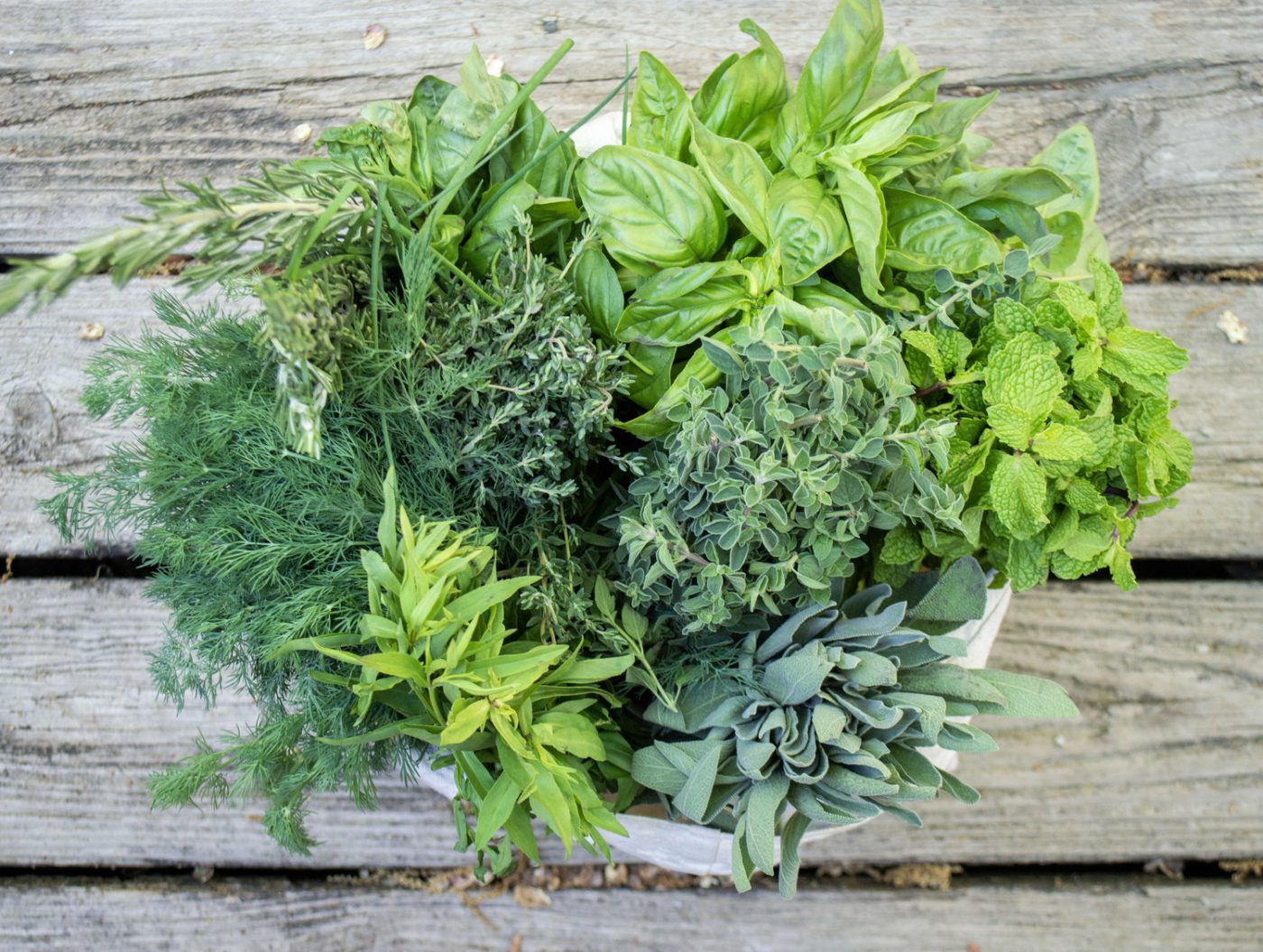The story behind Olia Hercules’ A Case for Eating Herbs as if They Were Vegetables in the New Yorker is well worth reading for her experiences of cooking in the Caucasus. The title conveys the vital message.
At each meal, a huge platter stood proud in the middle of the table, piled with bunches of greenery: raikhan (purple basil), mint, dill, tarragon, land cress, cilantro, and spring onions. They were long and robust, nothing like those sad, weedy clumps we now buy in supermarkets, and were meant to be eaten by the stalkful, as if they were vegetables. The adults—I was too young then to have a taste for herbs—would pick up a few sprigs of each, fold them in two, dip them into salt, and chomp on them along with fresh radishes and cucumbers, sometimes folded into lavash like a veggie kebab sandwich.
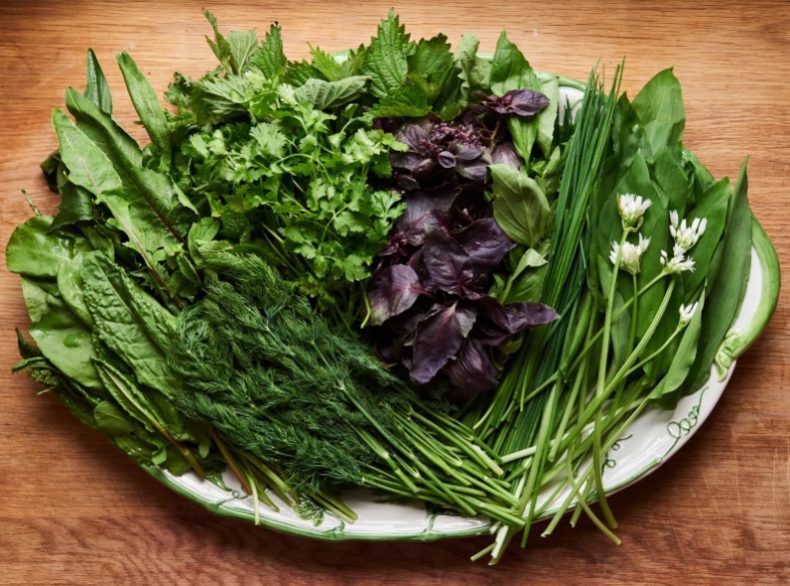
The accompanying photograph shows a variety of herbs roughly arranged on a platter with the caption: “Layer bunches of herbs on an ornate platter, and they will become the most decorative feature of any table”.
Lately, I’ve been seeing the practice touted on social media, like this from photographer Bette Blau’s instagram “What Bette Found”:
We visited a friend recently who put a board of fresh herbs in the center of the dinner table. Throughout the meal, we were able to add additional amazing flavor to each dish as we liked. I just loved it.
An herb garden or access to a farmer’s market provide the best possible herbs to serve.
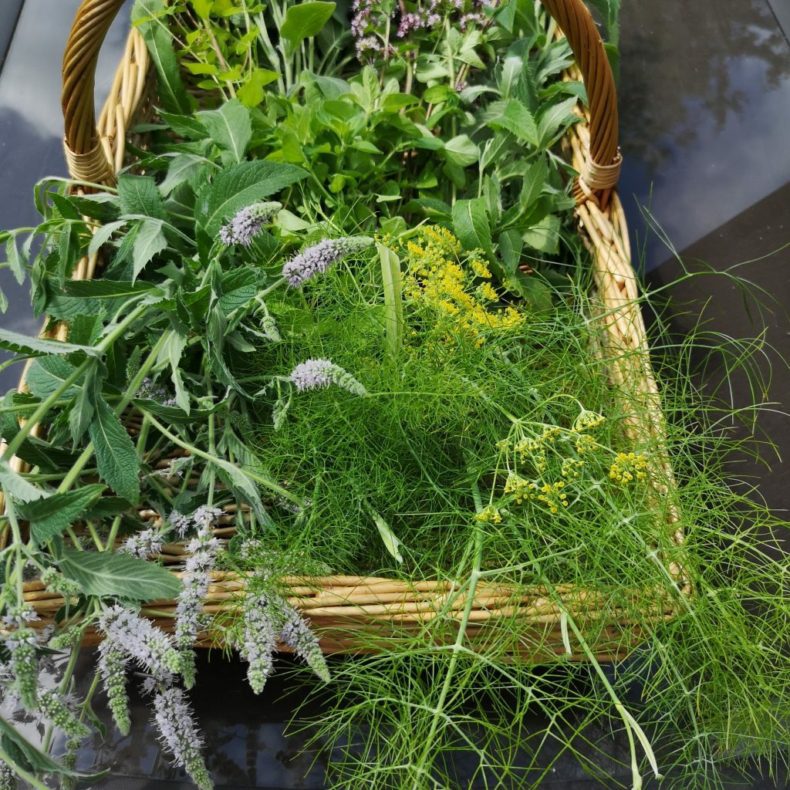
It reminded me that just about any herb can be thrown into a lettuce salad to add surprise. A chef I knew years ago would add little slivers of sage— generally considered taboo in salad making —which acted like wild little stealth bombs of flavor.
I first had a salad made only of herbs at artist Sandra Calder Davidson’s table, whose superb cooking was heavily influenced by her many years living in France. It was a revelation, as the convocation of herbs somehow balanced each other, never becoming as forceful as one might think. I serve it as is or with an aged goat or sheep’s cheese, or as an accompaniment to whole fish grilled with fennel, to evoke Provence and gardens. (Recipe is below).
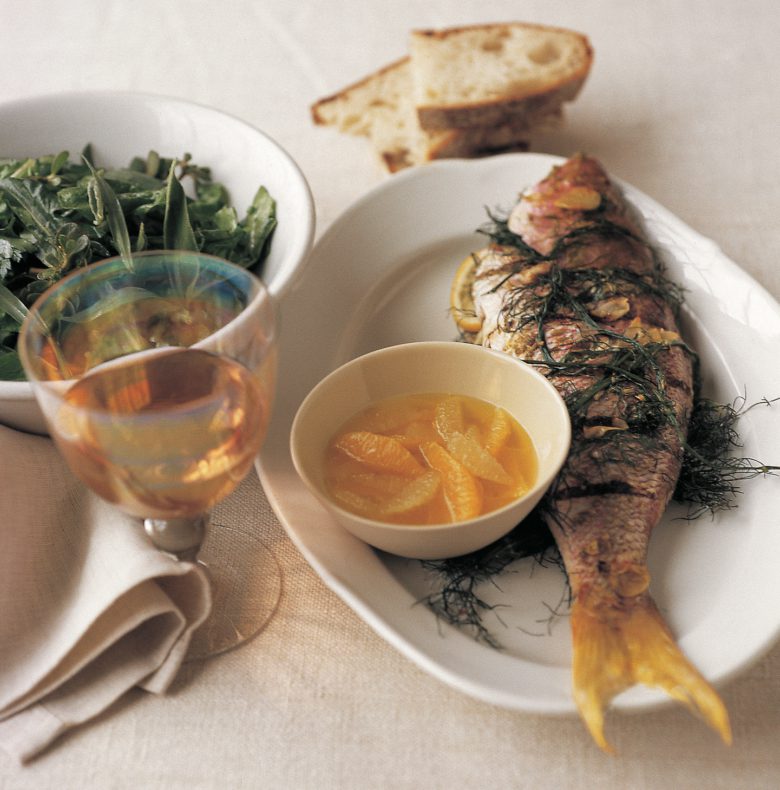
Lately, I’ve found myself making quick salads of one or two herbs and little chunks of avocado dressed with excellent olive oil and salt, and perhaps a few drops of sherry vinegar. My favorite is dead simple: cilantro sprigs cut crosswise into 1-inch lengths. Perfect for breakfast and as a refreshing, quickly made salad alongside a meal.
The roots of that impromptu cilantro salad lies in the salad I had decades ago in a Chinese restaurant on Mott Street in New York City: A bowl of tender cilantro sprigs dressed with toasted sesame oil (recipe below). At a restaurant farther down the street I visited on a late night ramble, a duck soup with a fistful of raw watercress taught the lesson of herbs plunked right into dishes, especially brothy ones.
Which takes us back to the practice of presenting bunches of herbs with a meal, for eaters to employ as they are inspired.
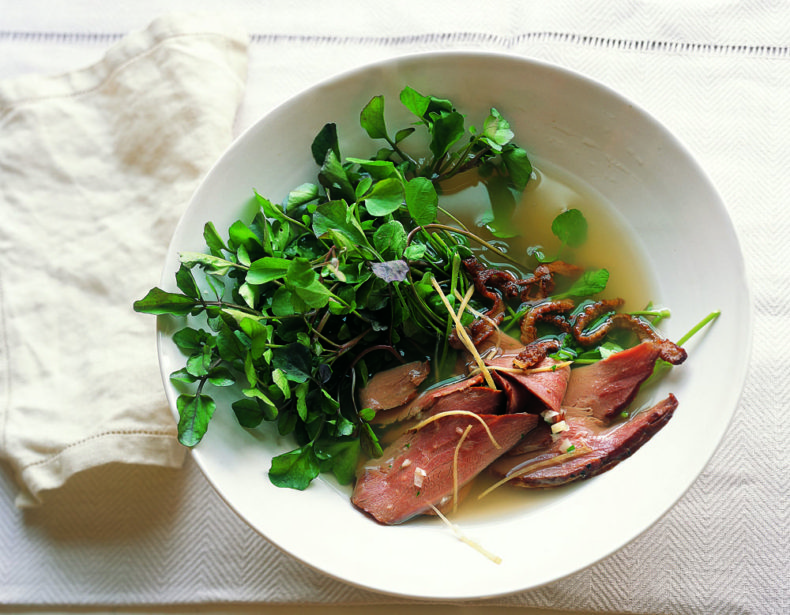
What herbs to offer? Think of their texture. What would be pleasant to eat (and easy to chew)?
Best are soft leaf herbs such as cresses, basils, cilantro, dill, mints, sorrel, chives (with their flowers if possible), flat-leaf parsley, tarragon, chervil, even young sage. You can push the boundaries and include other greenery like dandelion, ramps, purselane, fennel flowers and nasturtium.
Woody herbs like thyme, savory and rosemary have stems that are too tough too chew, and their leaves tend to be quite sharply flavored to chomp a big bite. These can be lovely to bruise and rub on foods, or pull off the leaves add to dishes.
And if, in the aftermath of the meal, you find piles of stems strewn around the table, salvage them like Hercules’ friend’s mother did.
She then scrunched the stems in her fists, to bruise them and release their scent, and threw them into a stockpot, where she let them simmer to infuse a simple vegetable broth. She quickly made a batch of tiny meatballs, and tossed them into the broth as well, along with some dandelion stalks. Then she ladled a bowl for each of us. It was one of the most perfect breakfasts I’ve ever had.
Recipe: Sandra Davidson’s Herb Salad
Serves 4
About 8 cups assorted herb leaves. Or the following proportion:
2 cups flat-leaf parsley leaves
2 cups dill leaves
2 cups cilantro leaves
1 cup peppermint leaves
1 cup chervil sprigs (optional)
1 cup tarragon leaves
1/4 cup chives, cut in 1/2-inch lengths
Olive Oil and Sherry Vinegar Dressing
1 teaspoon Sherry vinegar, preferably aged
Pinch kosher salt
2 tablespoons fine extra virgin olive oil
Freshly ground black pepper
Pull the leaves off the stems. This can be done more quickly than you might think. Strip the leaves off, by sliding your fingers backwards along the stem, opposite the direction the leaves point. Leave out any large leaves; small and medium ones will be the most tender and pleasing to eat.
Wash the leaves and spin dry. Wash the leaves gently and dry them in a salad spinner. Place the leaves in a bowl, cover with a damp paper towel and plastic wrap and refrigerate until you are ready to serve it.
Make the dressing. In a small bowl combine the vinegar and salt. Whisk in the extra virgin olive oil.
Just before serving, dress the salad. Drizzle the dressing over the salad. Toss to coat each leaf. Adjust the seasoning and add pepper to taste
Cilantro Salad with Fragrant Peanut or Sesame Oil
This salad is perfect with roasted duck or pork, or Asian-style shrimp and fish dishes. Sample a leaf of cilantro before you buy it; some are tough. You want soft, tender leaves for this salad. Be sure the dress the salad just before serving.
Serves 2; can be scaled up to serve more
In a small bowl, combine 1 teaspoon lime juice, 1/8 teaspoon sugar, a pinch of salt. Whisk in 1 tablespoon roasted peanut oil or 1 1/2 teaspoon toasted sesame oil and 1 1/2 teaspoons canola or grapeseed oil. If you like, infuse the dressing with 2 bruised slices of fresh ginger and a small strip of orange zest.
Strip the leaves off an 8-ounce bunch of cilantro. (Reserve the stems to make a private little salad of stems another time…) . Wash and spin dry. Place in a medium bowl; drizzle the dressing over and toss to coat.
Related Posts

